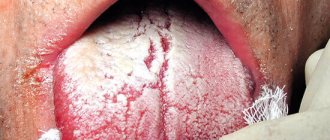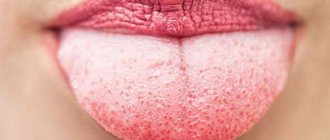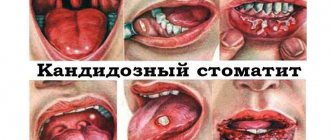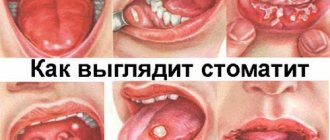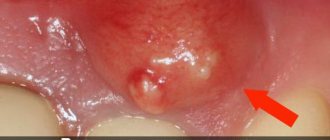What it is?
Otherwise, this procedure is called “light whitening.” And although light lamps are actually used, the effect is still achieved by the gel itself, which is applied to the tooth surface. The rays can only activate and enhance its effect. But by themselves they cannot affect the enamel in any way.
The following variations of light radiation are used:
- Ultraviolet - emits heat, heats the tooth and is considered not very safe.
- Halogen - a special lamp produces the so-called “cold light”, which minimizes overheating of tissues.
- LED - also refers to the “cold” method of whitening and is considered the best among those listed, as it is the safest.
The gel used for this procedure is based on a high concentration of hydrogen peroxide. When activated with a lamp, oxygen is released, which penetrates into the deep layers of enamel and dentin. This is what leads to the brightening effect.
Due to the high concentration of peroxide, as well as the danger of illiterate use of the lamp, this type of whitening is used only in the dentist's chair. You cannot do this at home, otherwise it may lead to unpleasant consequences.
Detailed description of the procedure
Photobleaching is done in one visit to the doctor, although there are cases when the patient wants to enhance the effect and then the manipulation can be repeated after a week. During one session, it is permissible to apply the active gel up to six times. Although some doctors recommend limiting yourself to three. All steps are quite simple:
- Initially, the dentist must examine the oral cavity, assess the condition of the patient’s teeth and decide whether to use a similar procedure or not. It is also advisable to clean plaque, tartar and treat caries, if any.
- It is definitely worth discussing the choice of whitening method and what result the patient wants to achieve.
- For protection, special glasses are put on, a retractor is installed and the mucous membrane is closed.
- The doctor applies the gel to the surface of the teeth and turns on the activation lamp. Its effect lasts 10-20 minutes. Then the gel is removed, and all manipulations can be repeated the required number of times until the desired effect is achieved.
- For the last time, having cleared the surface of the gel and removed all protective devices, you can evaluate the result on the Vita scale and give recommendations for further actions. So, he can recommend a colorless diet for the first time, as well as the use of various means to enhance or consolidate the whitening effect.
Advantages and disadvantages
The popularity of the photobleaching method is well deserved, since significant advantages of the procedure can be identified:
- The patient does not experience any particular discomfort during whitening.
- In most cases, with a competent doctor’s approach, the procedure is considered safe for dental health.
- Minimal number of contraindications.
- The results of whitening are noticeable immediately, and may become even stronger over the next week.
- All manipulations are performed no longer than an hour.
- The effect on the Vita scale is up to 10, and sometimes 12 shades in one session.
- Uniformity of lightening, effect on the entire dentition.
- The mineral composition of the enamel is not destroyed, which helps it quickly recover after exposure to peroxide.
- Relatively low cost of the procedure compared to other methods.
There are also some disadvantages:
- Increased sensitivity of the enamel may occur, which most often goes away after a few days.
- If the darkening of the tooth surface was caused by tetracycline drugs or is a consequence of fluorosis, then there may be no result.
- There are contraindications that need to be taken into account.
Professional whitening
If you look at the photo showing teeth before and after whitening in a dental clinic, it becomes clear that going to a specialist gives a guaranteed result. A professional enamel lightening procedure involves influencing dentin with special active substances-agents, due to which teeth become lighter by up to 12 tones.
Professional teeth whitening: before and after photos
The teeth whitening procedure at the dentist most often occurs in several stages:
- Application of special professional bleaches.
- Enhancing the activity of the applied composition by heating the tooth surface with a laser or a special lamp.
- Washing the reagent with water.
- Coating the dentition with a protective fluoride-containing varnish.
The duration of professional whitening ranges from 30 minutes to 2 hours, that is, the effect will be achieved in just one session with the dentist.
Photobleaching methods
The most popular options are:
- Beyond Polus - the lamp combines two types of radiation - halogen and LED, which helps increase the safety of the procedure. Typically, three cycles of the procedure are used, each lasting 10 minutes, and carried out during one visit to the doctor. The result lasts up to a year. There is no risk of high sensitivity of the enamel and its damage.
- Luma Cool - only LED radiation is used, which is a “cold” method and is absolutely safe for the tooth structure. The doctor applies the gel three times and activates it with a lamp for eight minutes. The effect lasts for several years, and the resulting sensitivity goes away after three days.
- Zoom - this technique uses ultraviolet radiation, which is not as safe as previous options. But by heating, a more significant effect can be achieved, since active oxygen is able to penetrate much deeper. It is important that the doctor is extremely careful and uses the lamp correctly. During the process, the patient may experience discomfort that goes away after a few days. The result lasts up to one and a half years.
What is the effect after the procedure?
Depending on the chosen method, you can achieve a lightening result of 5-10 or even 12 shades on the Vita scale in one visit to the doctor. Although much will depend on other factors.
- If your tooth is naturally gray in color, it will be more difficult to lighten. Yellowness is removed much easier.
- Darkening of the enamel from smoking, alcohol, coffee, tea and other coloring drinks or products can be corrected more quickly.
- If you take tetracycline or a disease such as fluorosis, the whitening effect may not occur at all.
The duration of the result will also largely depend on the patient himself - bad habits, diet, use of auxiliary products, etc. But it will definitely not be possible to achieve complete lightening for a lifetime using photobleaching. In a year or two the procedure will have to be repeated.
You need to understand that implants, fillings, crowns and other foreign objects will not be bleached. And in order to avoid a significant difference in shades, you should change them to more suitable ones or install veneers.
The photo turned out too dark (light). How to correct brightness and lighten (darken) a photo
Author: Alexandr, 01/04/2020 Headings: Pictures, screenshots and photos
Good time!
Often when shooting, some photos turn out to be too dark, less often light (this usually happens due to improper operation of the flash, choice of shooting location, insufficient camera focus, etc.).
Of course, in most cases it is simply impossible to retake a shot in real life. But you can always run a finished photo using special tools. editor and correct poor light exposure (see example in the image below).
Actually, in this short note I will give several ways how this can be done easily, quickly and without any special equipment. knowledge of photo processing (i.e. the note is suitable even for completely novice users).
So…
It was - it became (the difference in photo quality is noticeable to the naked eye!)
*
- 1 Working with color photos (the simplest options)
- 2 Option 1. Home photo studio
- 3 Option 2. Online processing
- 4 Option 3. Using Photoscape
→ | add
Working with photo color (the simplest options)
Option 1. Home photo studio
Developer website: https://homestudio.su/
A good photo editor for beginners. It has a very decent set of tools that allow you to correct and improve pictures. It differs from other programs of this kind in its simplicity: it doesn’t take long to work with it and you need to learn something (like, for example, Photoshop).
The editor is entirely in Russian and is compatible with all popular operating systems Windows XP, 7, 8, 10 (32/64 bits).
Installation of the program is standard (that's why I don't consider it). Next, you need to open the photo you want to fix (see example below).
Open photo (Home photo studio)
Then you need to click on the “Images / Lighting Correction” menu.
Image - Lighting Correction
Depending on what you want to do (lighten or darken), move the necessary sliders to the right.
For example, in my example I used the tools: lightening, detailing, saturation and contrast enhancement. The photo immediately changed beyond recognition!
Increase contrast and brighten shadowed areas
Well, the final touch (when the photo has already been processed) - just click on the “File” menu and save the result...
Save the processed photo
Option 2. Online processing
Resource 1: https://www.imgonline.com.ua/lightening.php
Resource 2: https://makeup.pho.to/ru/
As a rule, such services can process not too large photos (up to 5-10 MB in size, which is not always suitable...). But it happens instantly and quite quickly...
I’ll show you an example of photo processing on the first Fan Studio resource (link above). First, you need to upload the desired photo to the resource (arrow 1 in the screenshot below), then open the “Light” section and adjust the brightness, balance of light and shadows.
Fan Studio - online photo processing
Such an online editor shows all changes to the image immediately after applying certain effects (thanks to which you can process the photo very quickly).
Note: to download the processed photo, click on the floppy disk icon “Save or get link”.


